
Rabbit Anti-CD105 antibody
END; Endoglin; ENG; FLJ41744; HHT1; ORW; ORW1; Osler Rendu Weber syndrome 1; RP11 228B15.2; CD 105; CD105 antigen; EGLN_HUMAN; AI528660; AI662476; S-endoglin; SN6.
View History [Clear]
Details
Product Name CD105 Chinese Name CD105抗体 Alias END; Endoglin; ENG; FLJ41744; HHT1; ORW; ORW1; Osler Rendu Weber syndrome 1; RP11 228B15.2; CD 105; CD105 antigen; EGLN_HUMAN; AI528660; AI662476; S-endoglin; SN6. literatures Research Area Tumour Cardiovascular Cell biology immunology Signal transduction Stem cells Growth factors and hormones The cell membrane受体 Cell Surface Molecule endothelial cells Immunogen Species Rabbit Clonality Polyclonal React Species Human, Rat, (predicted: Mouse, Chicken, Dog, Pig, Cow, Horse, ) Applications ELISA=1:5000-10000 IHC-P=1:100-500 IHC-F=1:100-500 IF=1:100-500 (Paraffin sections need antigen repair)
not yet tested in other applications.
optimal dilutions/concentrations should be determined by the end user.Theoretical molecular weight 70kDa Detection molecular weight 90kDa Cellular localization The cell membrane Form Liquid Concentration 1mg/ml immunogen KLH conjugated synthetic peptide derived from human CD105: 601-658/658 <Cytoplasmic> Lsotype IgG Purification affinity purified by Protein A Buffer Solution 0.01M TBS(pH7.4) with 1% BSA, 0.03% Proclin300 and 50% Glycerol. Storage Shipped at 4℃. Store at -20 °C for one year. Avoid repeated freeze/thaw cycles. Attention This product as supplied is intended for research use only, not for use in human, therapeutic or diagnostic applications. PubMed PubMed Product Detail This gene encodes a homodimeric transmembrane protein which is a major glycoprotein of the vascular endothelium. This protein is a component of the transforming growth factor beta receptor complex and it binds to the beta1 and beta3 peptides with high affinity. Mutations in this gene cause hereditary hemorrhagic telangiectasia, also known as Osler-Rendu-Weber syndrome 1, an autosomal dominant multisystemic vascular dysplasia. This gene may also be involved in preeclampsia and several types of cancer. Alternatively spliced transcript variants encoding different isoforms have been found for this gene. [provided by RefSeq, May 2013]
Function:
Major glycoprotein of vascular endothelium. May play a critical role in the binding of endothelial cells to integrins and/or other RGD receptors.
Subunit:
Homodimer that forms an heteromeric complex with the signaling receptors for transforming growth factor-beta: TGFBR1 and/or TGFBR2. It is able to bind TGF-beta 1, and 3 efficiently and TGF-beta 2 less efficiently. Interacts with TCTEX1D4. Interacts with ARRB2.
Subcellular Location:
Membrane; Single-pass type I membrane protein.
Tissue Specificity:
Endoglin is restricted to endothelial cells in all tissues except bone marrow.
DISEASE:
Defects in ENG are the cause of hereditary hemorrhagic telangiectasia type 1 (HHT1) [MIM:187300]; also known as Osler-Rendu-Weber syndrome 1 (ORW1). HHT1 is an autosomal dominant multisystemic vascular dysplasia, characterized by recurrent epistaxis, muco-cutaneous telangiectases, gastro-intestinal hemorrhage, and pulmonary (PAVM), cerebral (CAVM) and hepatic arteriovenous malformations; all secondary manifestations of the underlying vascular dysplasia. Although the first symptom of HHT1 in children is generally nose bleed, there is an important clinical heterogeneity.
SWISS:
P17813
Gene ID:
2022
Database links:Entrez Gene: 2022 Human
Omim: 131195 Human
SwissProt: P17813 Human
Unigene: 76753 Human
The cell membrane受体(Membrane Receptors)
CD105(Endoglin):CD105是一种存在于细胞表面的同源二聚体跨膜glycoprotein,是TGF-β受体复合物的组成部分,是TGF-β的附属受体,能与多种TGF-β超家族成员结合尤其与TGF-β1、TGF-β3有很高的亲和力,调节TGF-βs与其受体结合而参与信号传导,是endothelial cells增殖相关膜抗原,在培养的高增殖活性endothelial cells和许多恶性Tumour组织vascular endothelial cell中高表达,参与血管生成,但其在血管生成调节中的作用机制尚未阐明。主要用于各种恶性Tumour组织中的血管生成的研究.
CD105(Endoglin):CD105是一种分子量为180kDa的存在于细胞表面的同源二聚体跨膜glycoprotein,是TGF-β受体复合物的组成部分,是TGF-β的附属受体,能与多种TGF-β超家族成员结合尤其与TGF-β1、TGF-β3有很高的亲和力,调节TGF-βs与其受体结合而参与信号传导,是endothelial cells增殖相关膜抗原,在培养的高增殖活性endothelial cells和许多恶性Tumour组织vascular endothelial cell中高表达,参与血管生成,但其在血管生成调节中的作用机制尚未阐明。CD105基因定位于人9号染色体,是Ⅰ型遗传性出血性毛细血管扩张症的相关基因。CD105基因敲除小鼠胚胎因血管生成缺陷而于受精后平均11.5天死亡,故有学者认为,CD105可能与血管生成启动有关,可用于标记Tumour新生血管。 Endoglin是endothelial cells表面与细胞增殖相关的膜抗原,也是转化生长因子β超家族受体复合物成分之一。其具有调节endothelial cells对TGF的反应、促endothelial cells增殖和促血管形成等功能,与Tumour血管的发生密切相关。近年来,Endoglin在Tumour诊断、判断预后和疗效及抗Tumour血管靶向治疗等方面的作用得到重视。姬,2017.1.15;
Product Picture
Antigen retrieval: citrate buffer ( 0.01M, pH 6.0 ), Boiling bathing for 15min; Block endogenous peroxidase by 3% Hydrogen peroxide for 30min; Blocking buffer (normal goat serum,C-0005) at 37℃ for 20 min;
Incubation: Anti-CD105 Polyclonal Antibody, Unconjugated(SL0579R) 1:200, overnight at 4°C, followed by conjugation to the secondary antibody(SP-0023) and DAB(C-0010) staining
Tissue/cell: human placenta tissue; 4% Paraformaldehyde-fixed and paraffin-embedded;
Antigen retrieval: citrate buffer ( 0.01M, pH 6.0 ), Boiling bathing for 15min; Block endogenous peroxidase by 3% Hydrogen peroxide for 30min; Blocking buffer (normal goat serum,C-0005) at 37℃ for 20 min;
Incubation: Anti-CD105 Polyclonal Antibody, Unconjugated(SL0579R) 1:200, overnight at 4°C, followed by conjugation to the secondary antibody(SP-0023) and DAB(C-0010) staining
Paraformaldehyde-fixed, paraffin embedded (human colon cancer); Antigen retrieval by boiling in sodium citrate buffer (pH6.0) for 15min; Block endogenous peroxidase by 3% hydrogen peroxide for 20 minutes; Blocking buffer (normal goat serum) at 37°C for 30min; Antibody incubation with (CD105) Polyclonal Antibody, Unconjugated (SL0579R) at 1:400 overnight at 4°C, followed by a conjugated secondary (sp-0023) for 20 minutes and DAB staining.Paraformaldehyde-fixed, paraffin embedded (human cervix cancer); Antigen retrieval by boiling in sodium citrate buffer (pH6.0) for 15min; Block endogenous peroxidase by 3% hydrogen peroxide for 20 minutes; Blocking buffer (normal goat serum) at 37°C for 30min; Antibody incubation with (CD105) Polyclonal Antibody, Unconjugated (SL0579R) at 1:400 overnight at 4°C, followed by a conjugated secondary (sp-0023) for 20 minutes and DAB staining.
Bought notes(bought amounts latest0)
No one bought this product
User Comment(Total0User Comment Num)
- No comment
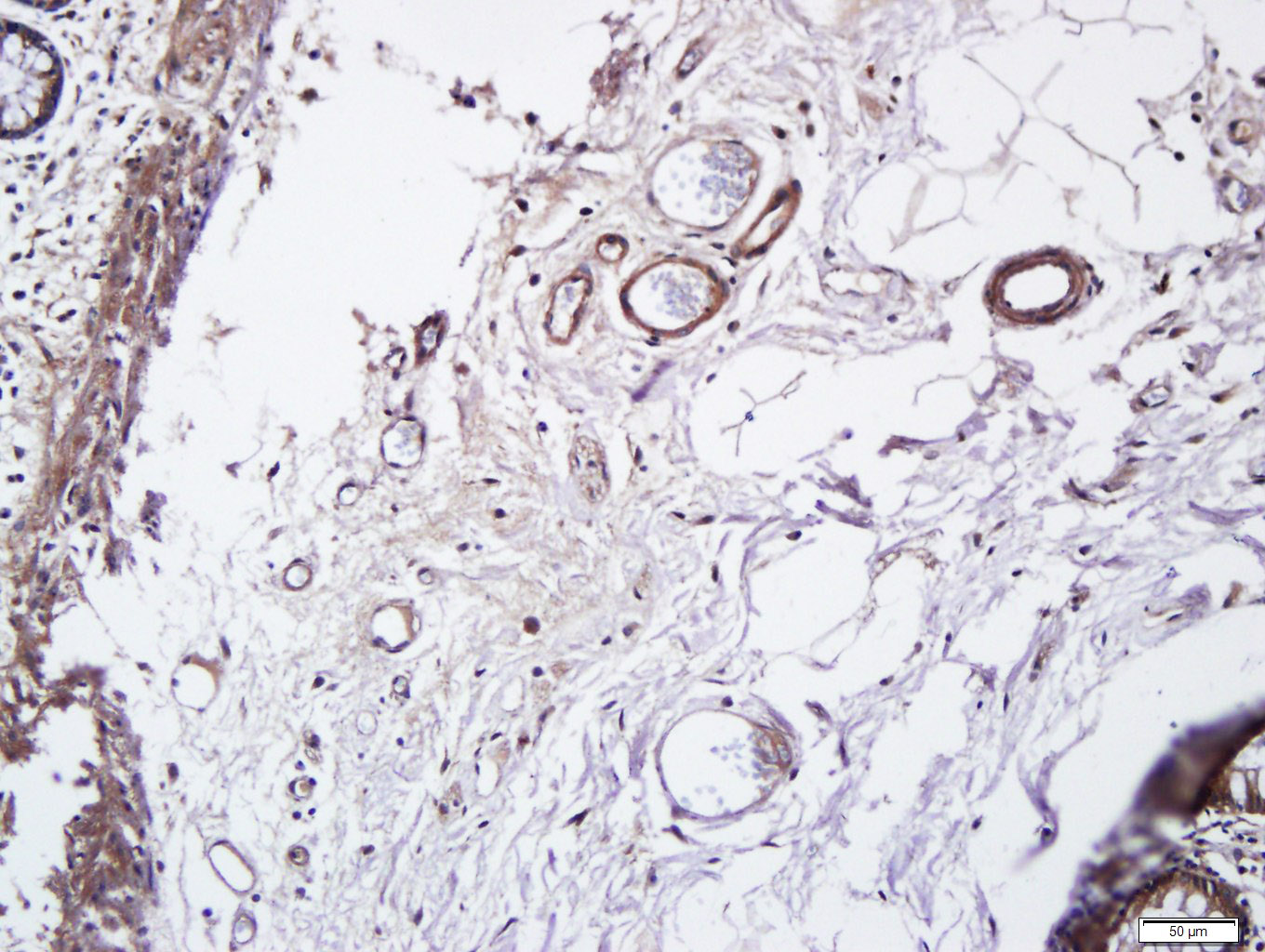
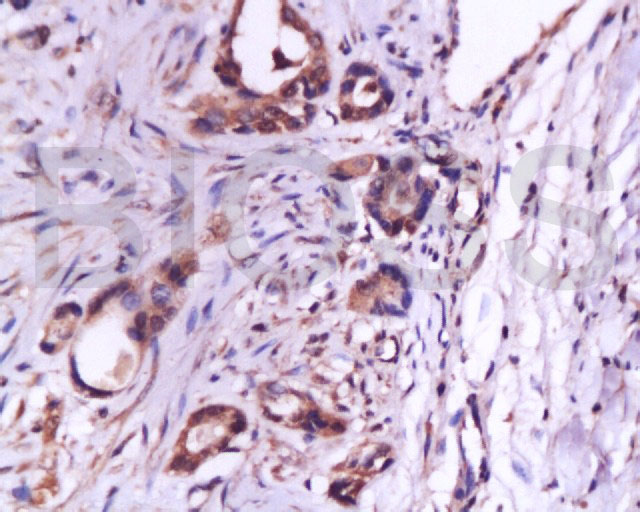
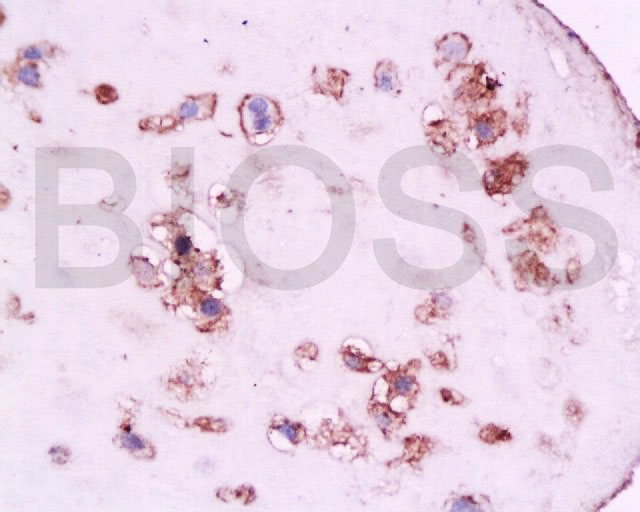
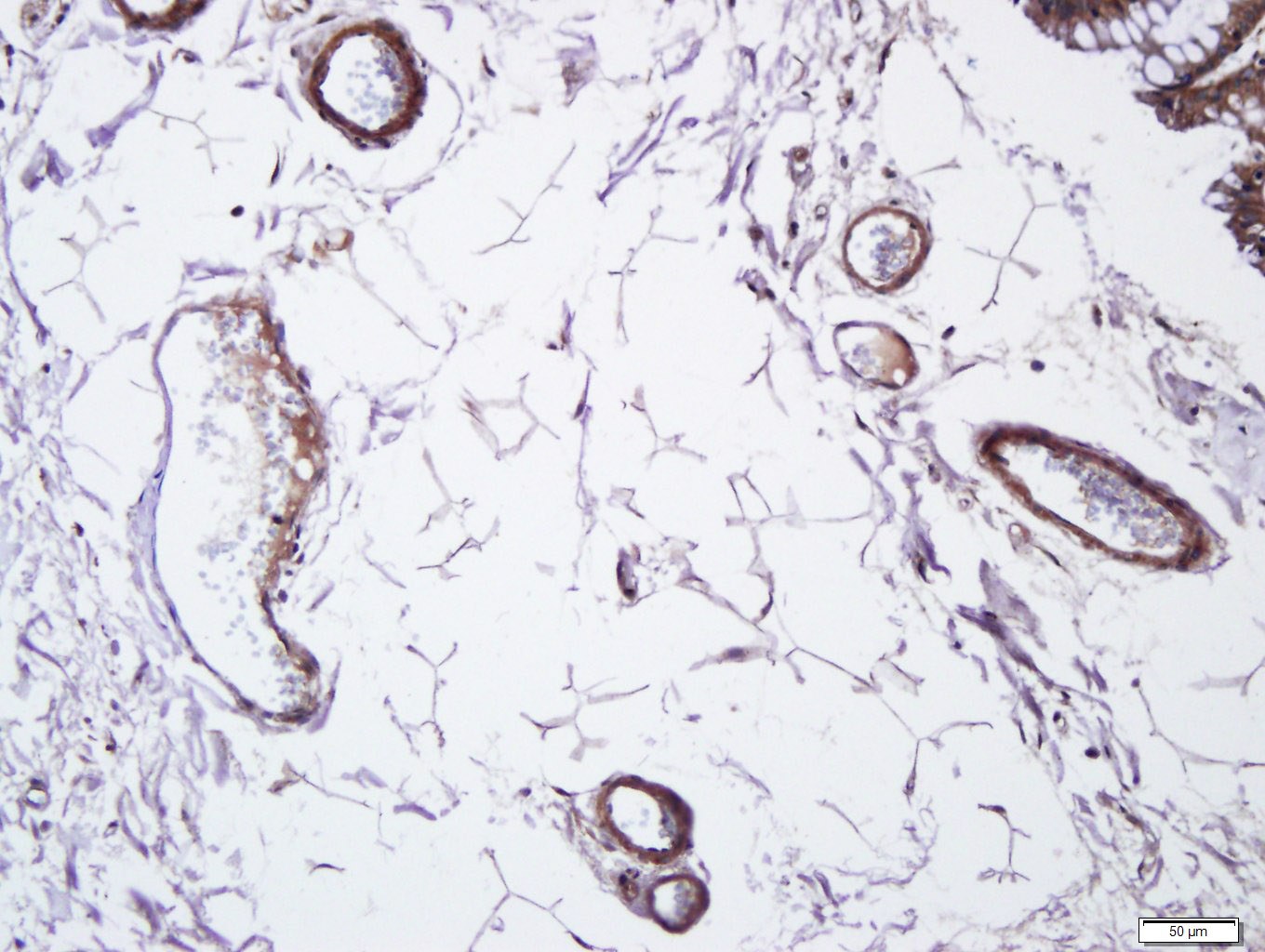
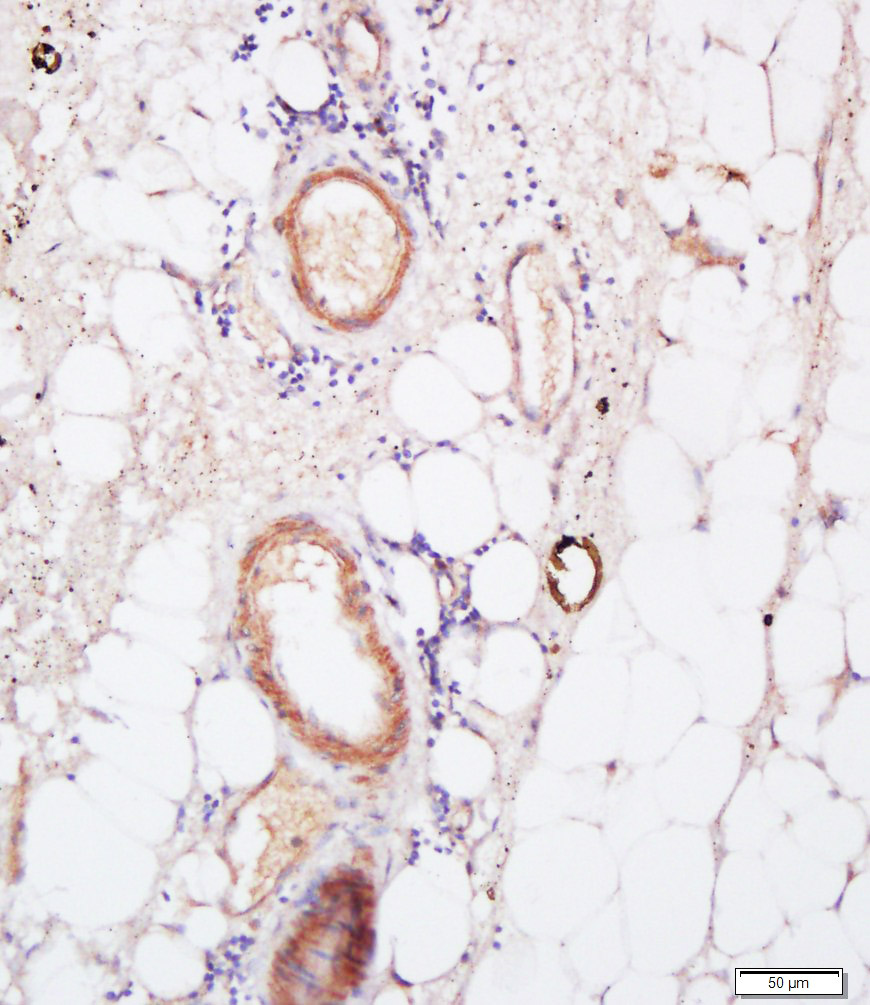


 +86 571 56623320
+86 571 56623320
 +86 18668110335
+86 18668110335

